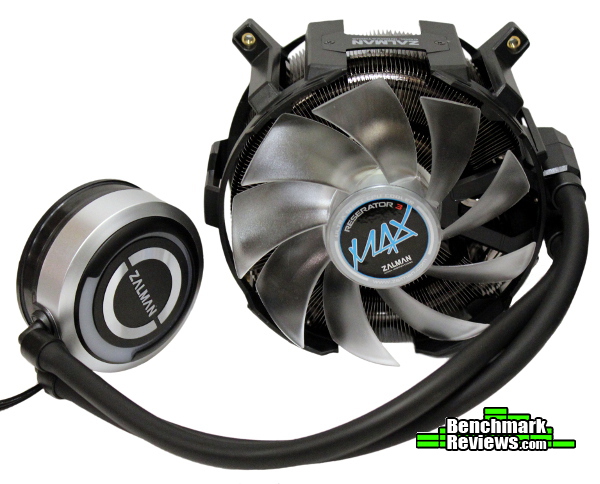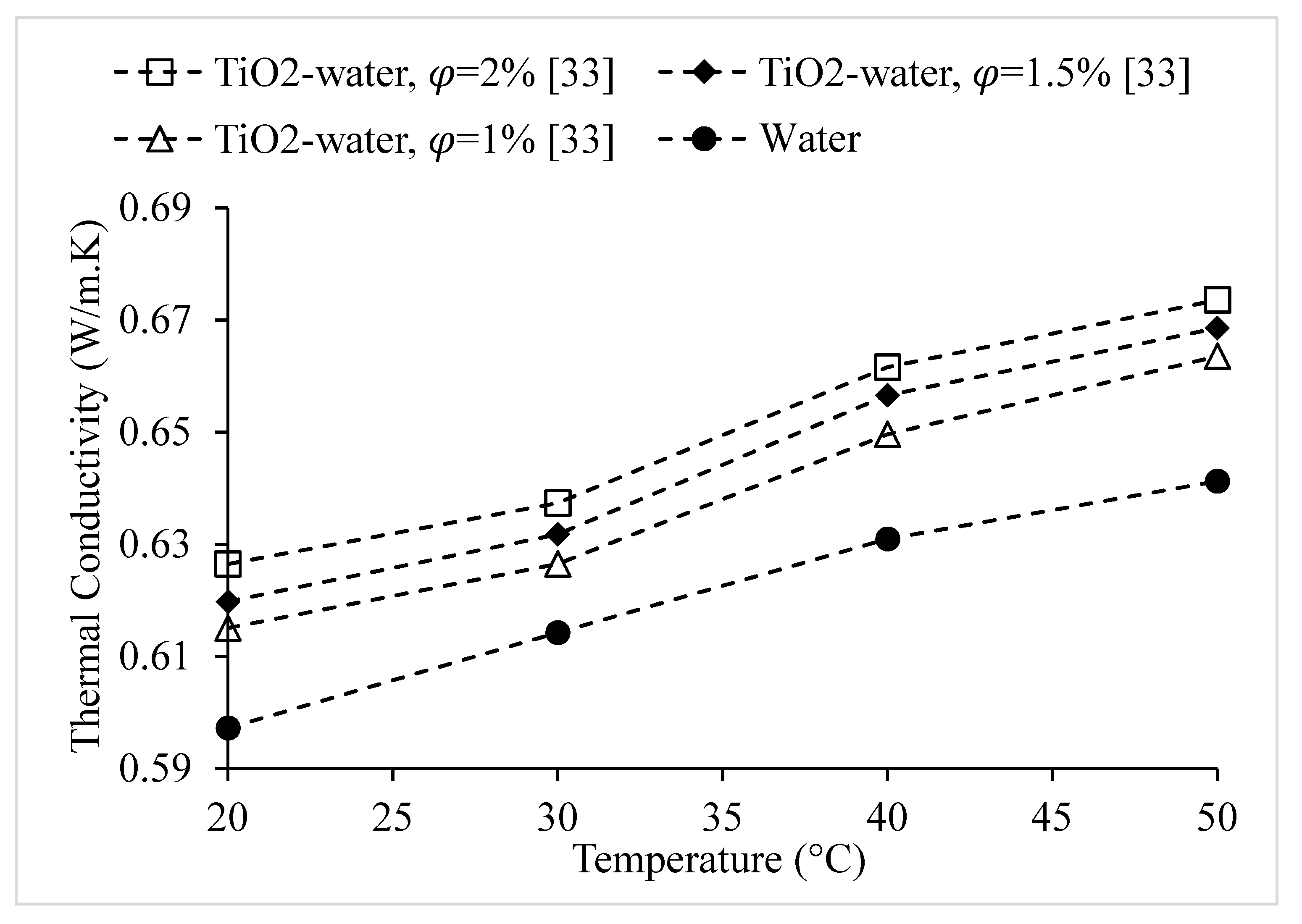nanofluid water cooling
Nanofluid has drawn significant attention in enhancing the cooling performance and safety aspects of nuclear reactor technology. This review paper deals with the study and fabrication of the existing cooler modified with a radiator through which refrigerant fluids of nanoparticles are passed.

On The Nanofluids Application In The Automotive Radiator To Reach The Enhanced Thermal Performance A Review Semantic Scholar
37 According to their results the best concentration of nanofluid in terms of system performance was 0075 vol and in this concentration the overall system efficiency was around 8326 and 12C reductions for PV panel temperature attained.
. Nanofluids are nanotechnology-based heat transfer fluids that are engineered to possess unique thermal properties that are drastically different from those of conventional heat transfer fluids. Heat transfer enhancement using Al2O3water nanofluid for an electronic liquid cooling system Appl Therm Eng 27 2007 pp. Lesen Kundenbewertungen und finde Bestseller.
On the hot side the maximum COP of the thermoelectric cooling module was 110 and 130 for water and nanofluids as coolant respectively. The application of multi-wall carbon nanotube MWCNTwater nanofluid in the solar system was investigated by Abdollah et al. Nanofluids enable the potential to allow higher temperature coolants and higher heat rejection in HVs.
We used nanofluid cooling in a box in order to show the cooling efficiency on the one hand and to determine the parameters that can affect it on the other hand. Before entering the electric vehicle battering system with a Peltier module the inlet coolant temperatures were 25-35 lower than those without the thermoelectric system. When the existing cooling fluids were replaced by FlexeGRAPH graphene nanofluid cooling performance was improved 02.
We then proposed to carry out a numerical study on a prototype of a nanofluid box in order to evacuate. And a stronger heat transfer performance over water can then be obtained using liquid metal as the coolant. This is a simple effective way to improve cooling systems for nuclear power plants.
In cooling systems when compared with water Hydromx makes heat transfer 37 faster transferring the same amount of heat in a much shorter time. The best behavior of the solar collector is observed for 05 wt of nanofluid samples. Ad Entdecken tausende Produkte.
Indian and Malaysian scientists have developed a new cooling system featuring an assembled back-channel attached on the rear sides of solar panels to channel flows of titanium oxide and water. Herein a numerical analysis has been accomplished to explore the thermal transport in subchannel geometry of a typical pressurized water reactor PWR replete with Al 2 O 3 TiO 2 water hybrid nanofluid. This improvement enables higher engine output or other performance benefits through system redesigns such as lower weight and reduced aerodynamic profile.
The energy efficiency of Hydromx is based on reducing the run time of the compressor and increasing the required ambient temperature limits for Free Cooling up to 41 43ºF. 299 employed Al 2. 02 FlexeGRAPHs nanofluid improves race car performance.
A nanofluid is a fluid containing nanometer-sized particles called nanoparticles. Nanofluids have novel properties that make them. Erhalten auf Amazon Angebote für water cooling fluid im Bereich Computers.
To protect microprocessors at high frequencies against excessive heating the use of another cooling system is essential. This review paper deals with the study and fabrication. Nanofluids which consist of a carrier liquid such as water ethylene glycol dispersed with tiny nano-scale particles known as nanoparticles.
When added to cooling systems and subjected to a magnetic field the ability of the nanoparticles to transfer heat is increased by as much as 300 percent. During spray cooling the copper target surface was first heated to approximately 300C by the cartridge heaters. And then nanofluid from the spray nozzle was sprayed on the testing surface.
The nanofluid was used as cooling fluid for the CPVT as well as an optical filter to extract only the useful solar spectrum for the concentrated photovoltaic system. Compared with the water cooling case the temperature at the radiator is higher with the flow of the much hotter liquid. The authors concluded that adopting nanofluid as a working medium with the CPVT system had a great influence on the electrical thermal and overall efficiencies 18 33 and 51 respectively.
Only the surface of the open area was cooled down by the nanofluid coolant. A higher temperature radiator. 1501 - 1506 Article Download PDF View Record in Scopus Google Scholar.
De Risi et al. A simplified equation can be used to characterize the heat transferred via coolant as 2 Q T coolant T air R. These properties include significantly enhanced heat transfer coefficients and strong temperature-dependent thermal conductivity.
Magnetic nanofluids consist of colloidal magnetite nanoparticles suspended in a base fluid. The nanoparticles used in nanofluids are typically made of metals oxides carbides or carbon nanotubes. The use of nanofluid reduces the heat transfer surface and the flow rate of heat transfer fluid due to the greater thermal conductivity.
The fluid was collected after spraying and recycled back to the tank. Nanofluids which consist of a carrier liquid such as water ethylene glycol dispersed with tiny nano-scale particles known as nanoparticles. A major goal of the nanofluid project is to reduce the size and weight of the HV cooling systems by 10 thereby increasing fuel efficiency by 5 despite the cooling demands of higher-power engines and EGR.
12671 and 738 enhancement in terms of thermal and electrical efficiency can be gained by the application of nanofluid in the system compared with pure water respectively. Common base fluids include water ethylene glycol and oil. These fluids are engineered colloidal suspensions of nanoparticles in a base fluid.
The best obtained value of the overall efficiency is around 9373 for the studied system.

A Single Step And B Two Step Methods To Prepare Nanofluids 22 26 Download Scientific Diagram
Liquid Cooling Advanced Thermal Solutions Page 3

Temperature Vs Time And Cooling Rate Vs Temperature Plots For Quenching Download Scientific Diagram

Cooling Curve Of Zno Nanofluids In Engine Oil Download Scientific Diagram

Zalman Reserator 3 Max Nanofluid Aio Liquid Cpu Cooler Review Benchmark Reviews Techplayboy

Variation Of Water Based Nanofluid Thermal Conductivity As A Function Download Scientific Diagram

A Comparison Between Cooling Data Recorded For Highly Agitated Download Scientific Diagram
Ice Dragon Cooling Nanofluid Coolant Concentate 250ml Nanofluid Nanotechnology Products Npd
Thermal Conductivity Of Water Based Sio2 Al2o3 And Tio2 Nanofluids At Download Scientific Diagram

Applied Sciences Free Full Text Nanofluid Thermal Conductivity And Effective Parameters Html

Parametric Investigation Of A Chilled Water District Cooling Unit Using Mono And Hybrid Nanofluids Scientific Reports

Nanofluid Cooling For Data Centers Abb

Properties Of Water And Nanofluids Download Table
Zalman Launches The Reserator 3 Max World S 1st Nanofluid Cooler Cooling News Hexus Net

Improving The Cooling Performance Of Automobile Radiator With Ethylene Glycol Water Based Zro2 Nanofluid And Compare With Al2o3 Nanofluid Semantic Scholar

Silica Nanoparticles A Sio 2 Water Nanofluid Of 0 04 Vol B Sio Download Scientific Diagram

Water Vs Nanofluid Vs Coolant Vs Anything Else R Watercooling

Comparison Of The Heat Transfer Cu Water Nanofluid Correlation With The Download Scientific Diagram

Numerical Study On Effect Of Cuo Water Nanofluid On Cooling Performance Of Two Different Cross Sectional Heat Sinks Sciencedirect
0 Response to "nanofluid water cooling"
Post a Comment